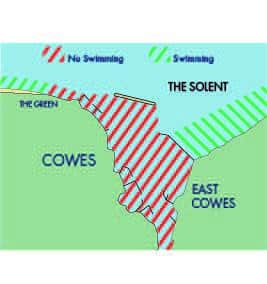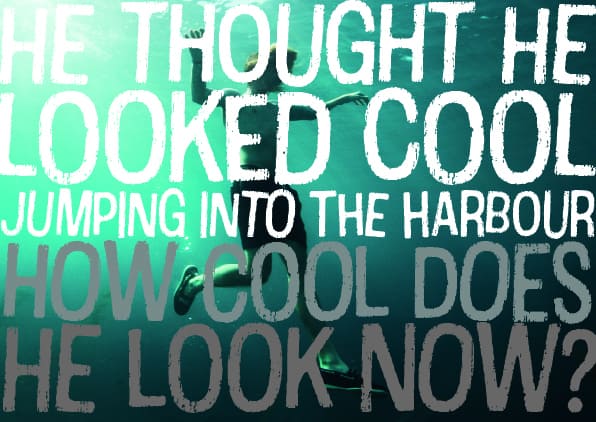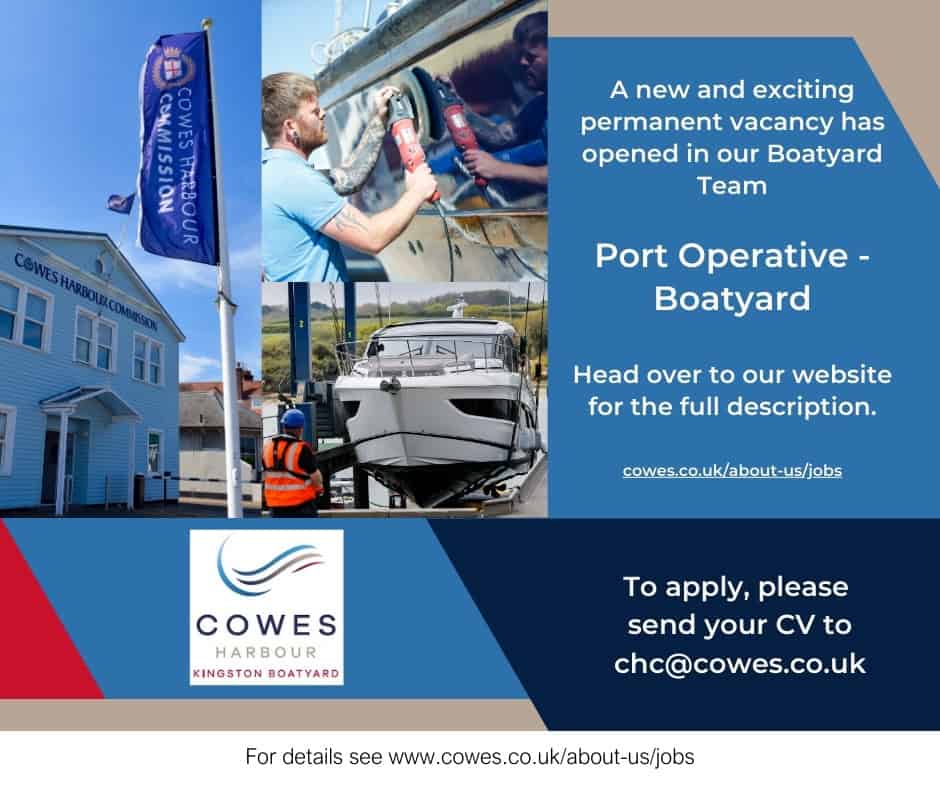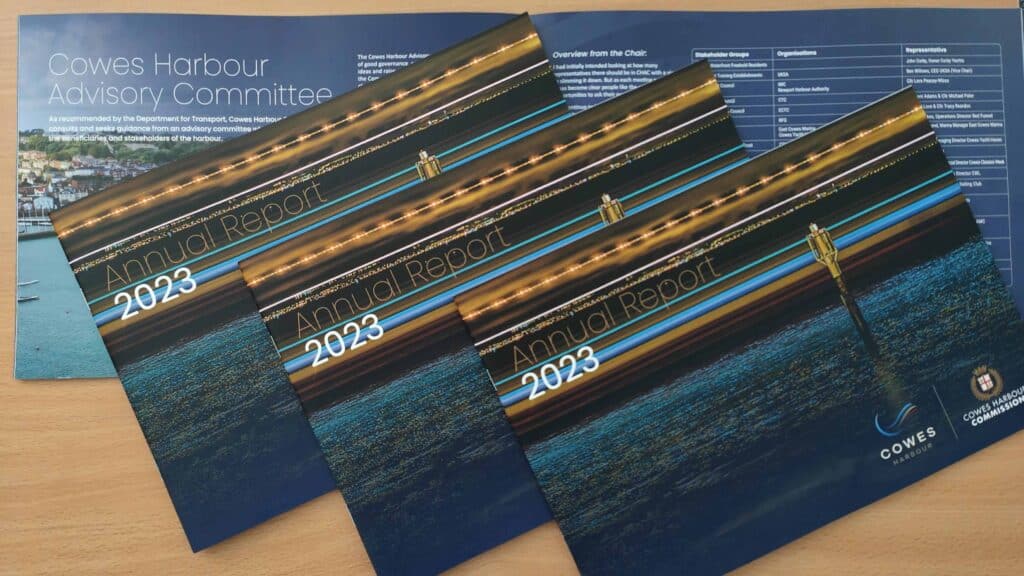
In April 2021, The World Health Organisation (WHO) passed a historic directive to tackle the hundreds and thousands of deaths caused by drowning each year across the globe. The directive launched the newly created World Drowning Prevention Day (WDPD) on 25 July. Organisations, especially those that involve activities that have a higher-than-normal risk of drowning, are encouraged to act to prevent accidents and raise awareness of the potential dangers.
Cowes Harbour Commission is therefore supporting this initiative as the safety of the harbour users is our upmost priority. We are increasingly seeing sailors not wearing personal flotation devices (PFDs), using ‘kill-cords’ but also-especially at this time of year-children ‘tombstoning’ into the Medina to show off and anti-social behaviour from some boat owners who do not show due respect for other harbour users. We will be launching a new campaign kicked off by WDPD where we will caution
- children ‘tombstoning’ and swimming in prohibited areas of the harbour
- sailors not wearing PFDs or using ‘kill cords’ in the harbour
Children and ‘Tombstoning’ are a primary concern
The WDPD is especially relevant to children as drowning is one of the highest causes of death in the 5 – 14 age group across the world. Now the schools have broken up for summer we see an increase in the incidents involving children ‘tombstoning’ and swimming in the river. The name ‘tombstoning’ was adopted because of the way a person falls and plunges into water, in a similar way a stone would. We want to prevent this activity from taking place in the harbour by contacting parents and children, making them aware of the dangers involved and providing them with further resources to educate their children in water safety. We are not advocating against tombstoning, but it should be undertaken in the right location and the harbour is not the right location. Advice for tombstoning has been issued by the Royals Society for Prevention of Accidents (RoSPA) the key points of which are: -.
- Check for hazards in the water. Rocks or other objects may be submerged and difficult to see
- Check the depth of the water. Remember tides can rise and fall very quickly
- As a rule of thumb, a jump of ten metres requires a depth of at least five metres
- Never jump whilst under the influence of alcohol or drugs
- Check for access. It may be impossible to get out of the water
- Consider the risks to yourself and others. Conditions can change rapidly – young people could be watching and may attempt to mimic the activity. And, if you jump when you feel unsafe or pressured, you probably won’t enjoy the experience.
Information on tombstoning can be found at the links below
RoSPA –TombstoningAdvice
RoSPA– Blog Post on Tombstoning
UKGovernment Advice on Tombstoning
The following are links to resources to support the education of children in water safety.
Canal and River Trust – Water Safety
RNLI – Swimsafe
RNLI – RespectTheWater
RNLI – FloatingFacts
RNLI – SummerHolidaySafetyWarning
Swimsafe Initiative
Royal Life Saving Society – SummerWaterSafety
RoSPA – Advice for Parents
Below is a map showing the safe areas for swimming in and around Cowes Harbour. This map essentially shows that no swimming is permitted in the fairways or in and around mooring or berth areas, however sea swimming areas are available west of The Green and east of the breakwater where the Shrape Watersports Area starts.

It’s not just children’s safety
According to the Royal Lifesaving Society UK, each year around 700 people drown in the UK and Ireland. Additionally, about 2,100 people in England alone, are admitted to Accident and Emergency annually, as non-fatal, or ‘near drowning’ incidents, with thousands more incidences occurring in Wales and Scotland. Therefore, the scope of the campaign will also encompass the use of PFDs and safe use of boats to prevent accidents that could lead to drowning.
RoSPA – Use of Lifejackets
A Necessary Hard-Hitting Campaign
Research suggests that the main reason why people do not act safely around water is they want to be seen as ‘cool’ or that the PFD is bulky and uncomfortable. New PFDs can be very light and compact and the campaign will therefore focus on overcoming the ‘cool’ factor that prevents the use of lifejackets, encourages children to tombstone and some harbour users to push the limits of safety.
As this is an annual problem, the campaign will be high impact and use social media to raise awareness as well as leaflets that will be handed out directly to those not following the rules. It will ask, rhetorically, if the person not wearing the life jacket, jumping into the river or behaving recklessly looks ‘cool’ after they have drowned. The artwork for these leaflets can be viewed via the links below.


We will be working with the Police and RNLI in increasing vigilance and the use of CCTV of the landing, jetties and marinas to spot and prevent children, and adults, from entering the water. To that end, we will also be encouraging local business and organisations that use the river to adopt the action plan provided by the RoSPA which details the legalities and practical ways in which they can proactively reduce the likelihood of accidents taking place. A link to that document can also be found below.
RoSPA – Manging Safety At Inland Waters
With the increased traffic during Cowes week and the upcoming events during the rest of the summer we cannot allow any activity to take place that endangers life and we will act appropriately to ensure the safety of all the users of the harbour.
#DrowningPrevention Day, #RespectTheWater, #dontjumpintotheunknown






